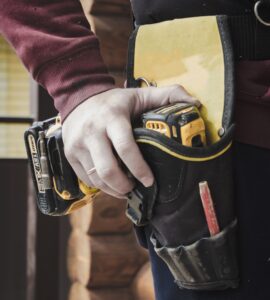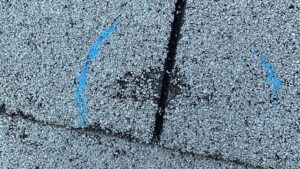Many factors must be taken into account when deciding on the right sort of roof for a structure. It has been typical practice for commercial buildings to employ flat roofs due to the need for high-end HVACs and refrigeration units on the rooftop. However, flat roofs on houses are becoming more frequent these days, and they have the potential to provide some important advantages to property owners.
What Is a Flat Roof?
When it comes to roofs, a flat roof is exactly what it sounds like. It’s a roof that’s nearly flat or level. Sloped roofs are more common, and the point where the two sides meet is commonly a peak. It is typical to have a sloping roof in order to ensure that water and snow flow off of it, hence reducing the chance of pooled water damaging the roof.
The majority of flat roofs aren’t actually completely flat. The slope is often quite low, with values as low as 10 degrees. This can be difficult to pick up on at times.

What Is the Typical Lifespan of a Flat Roof?
A flat roof’s lengthy life duration is one of the reasons to consider it. These roofs, which can last up to 50 years depending on the type of roof used, allow homeowners to only have to replace them once over their lifetime.
Various factors impact the longevity of a flat roof, including the type of materials used. Some other factors that play a role in this include:
- The climate in the area
- The type of roofing material used
- Any roof penetration
- Installation processes and methods
- Proper maintenance
Ineffective installation or a poor level of maintenance can shorten the lifespan of a flat roof to 10 to 20 years.
What are the different types of flat roofs?
Flat roofs come in three varieties. Consider each variety to discover which is the greatest overall choice for any place if you’re thinking about adding this type of roofing material. To help you make an educated choice, let’s take a look at the three most common and some specifics about each.
Built Up Roof (BUR)
Waterproof material is commonly used in the construction of a built-up roof. Asphalt, rubberized foam sheets, and tar paper are all examples of this type of material. It is common for a built-up roof to be among the most long-lasting types of covering. It might last anywhere from 10 to 25 years on average. However, this is dependent on the roof’s total installation.
To put it another way, BUR is more expensive to build than other forms of flat roofs. Once it’s placed, it can survive for up to 25 years, and in some cases even more. Many of the more recent BURs are constructed with better-quality components than older ones.
This style of roof has a number of advantages. For example, gravel, a proven fire retardant, is frequently used into the mix. Some people may find it to be an enticing alternative. A BUR roof will also save you money in the long run.
There are some drawbacks to this form of roofing, including its weight and cost. Over time, the joists may need to be strengthened, especially. In order to reap the benefits, it must also be professionally installed.
Modified Bitumen Roof
A single-ply modified bitumen roof is another popular alternative for flat roofs. Affordability has led to its widespread use over the years. Overall, it has a long lifespan. A 25-year lifespan makes it a viable option for people seeking a long-term roof solution. The size of the roof, the amount of maintenance it receives, and the general quality of the installation all contribute to the roof’s lifespan. The largest issue is that it can develop leaks if it is not properly maintained and sealed.
These roofs are often constructed from a blend of asphalt and modified polymer blends, which makes them both durable and adaptable. Easy installation and light-colored material alternatives can assist reflect the sun away, saving energy expenses, were two of their main advantages.
Rubber Membrane Roof
Option three is a rubber membrane roof like EPDM (ethylene propylene diene monomer). This is the real deal when it comes to rubber roofing. There are numerous advantages to using this substance, and as a result, its popularity has steadily increased over time. This sort of roof is a long-lasting, single-ply construction that resembles an inner tube. However, it has been designed to be extremely durable.
There is also a good chance that this roof won’t be harmed by the sun. It can be fastened to the roof in a variety of ways, including ballasting with stone, glue, or fasteners.
Installing this style of roof is a little bit easier because the material is usually lightweight. It is less prone to tearing, scuffing, or sun discoloration. If a leak does occur, it’s a lot easier to fix than a roof made of other materials.
Darker colors can absorb heat more quickly, hence lighter hues are more valued as a result. Some products are more expensive than others.
Which type of flat roof is best for your home or building?
There are several variables to consider. Working with a professional is frequently the best way to get a close look at these materials. For homeowners who do not want to make repeated investments in a roof, a long lifespan is an important consideration. The roof’s beauty and energy efficiency should also be taken into consideration while making a decision. A simple-to-maintain roof is often a key consideration as well.
The best roofs are ones that are tailored to the demands of the property and the occupants of that property. The longevity of this sort of roof depends heavily on the quality of the installation.





